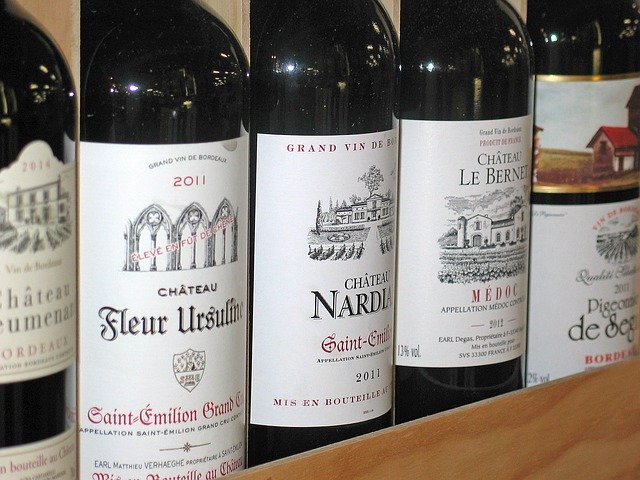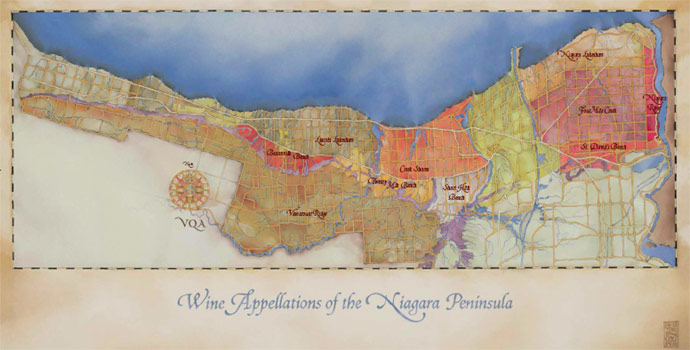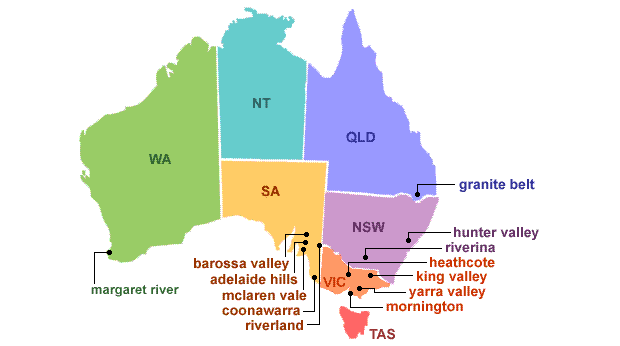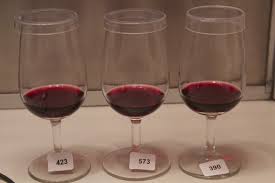What Do Geographical Indications on Wine Labels Tell You?
A bit of history first

Geographical indications signal the place of origin of the products at hand. For wine, they are the regions of grape growing and winemaking.
The traditional system of wine appellations in Europe was established to inform you, the customers, at the place of wine production .
Indeed, over the centuries, specific wine regions distinguished themselves by producing exceptional wines. You may have heard of the wines made in the village of Saint-Emilion in Bordeaux, France, or the wines of Chianti made in Tuscany, Italy.
Therefore geographical indications in old producing wine regions became symbols of quality we could expect when purchasing wines from these local appellations.
The commercial strategy was different in the New World wine-producing regions; They chose to market their wines by grape varieties, known as varietal wines. The winemaking history was relatively new, and winegrowers were still experimenting in defining their wine styles. As these countries grew in popularity, we began to read reviews, for example, on Sauvignon blanc from Marlborough or from Hawke's Bay, instead of referring only to the country of origin, New Zealand.
But the big question remains:
Do different wines from different regions taste different?
Do geographical indications tell you what flavors to expect?
Over the last ten years, however, many studies have been conducted to determine if geographical indications produced particular wine flavor profiles that could guide us when shopping for wines.
Learnings from Canada
I consulted on a research program aimed at defining sub-appellations for Riesling wines produced in the Niagara region, south of Toronto, Canada. A student made wines from 10 different vineyards, each located in potential appellations, and on two consecutive years [1]. Wines were submitted to both chemical and sensory analysis to reveal any difference in aromatic compositions. This work became the foundational research to determine the sensory signature of the Niagara sub-appellation system created by the Vintners Quality Alliance * based on soil composition and climate.

Researchers found flavor notes differentiating Riesling wines made from the generalized regional designations, however, no particular flavors could uniquely define the ten sub-appellations.
* The Vintners Quality Alliance is the government body managing regulations for the Canadian wine industry
New findings from Australia
More recently, Australian winegrowers began to investigate the use of geographical indications for their varietal wines . Findings from a study on Cabernet Sauvignon wines were published at the end of 2019 [2]. The research team decided to search for wine flavor descriptors most often associated with three Australian wine regions: Coonawarra, Margaret River, and Yarra Valley.

An innovative approach to finding unique flavor descriptors

They analyzed 2598 wine reviews from well-known wine critics and published online over 15 years (2001-2016). Fortunately, text mining technology has made significant progress, and several programs exist to run the content analysis of the reviews and identify the terms most often associated with each region.
The research team also decided to call upon 11 wine experts to evaluate and describe, with their own words, a set of 84 Cabernet Sauvignon wines from the same vintage, 2015. Such an approach is similar to what the old wine-producing countries have down back in the days.
The selection included 34 wines from Coonawarra, 20 from Margaret River, 20 from Yarra Valley, and ten from Bordeaux; the latter served as ringers!
Experts also gave a quality score to each wine. These scores were translated into the Australian wine show judging system, awarding Gold, Silver, and Bronze medals.
Flavor differences among three Australian wine regions
Twenty-four flavor categories emerged from the combined analysis of reviews and expert descriptions of Cabernet Sauvignon wines.
The wine review analysis provided these results.
- Coonawarra wines distinguish themselves with a unique Minty flavor, and some Earthiness, and Full body ( Learn more about what wine body is here ).
- Margaret River wines were more Complex, with Leafy and Olives flavors.
- Yarra Valley seemed to produce Medium-bodied wines with more Herbal and other Green notes.

The expert descriptions were slightly different, mainly due to the introduction of Bordeaux wines, with very different profiles (more Mineral, Bretty), and the fact that they evaluated only one vintage.
- Coonawarra wines had more Ripe fruits character.
- Margaret River wines had more Floral notes.
- Yarra Valley wines were less distinctive in flavors.
Geographical indications and wine show medals

In a different article published here, I shared a study showing that specific flavor profiles had better chances of getting a medal at the Mundus Vini International wine competition [3].
What were the findings here?
- Margaret River Cabernet Sauvignon wines, most often associated with Complexity and Floral, happened to have received more Gold medals and less Bronze or no medal at all.
- Yarra Valley wines, on the contrary, won more Bronze medals or no medals and less Gold medals. Flavors associated with these wines were Herbal and Green notes.
- There was no medal association found with Coonawarra wines.
The Mundus Vini Gold medals were also more often awarded to Complex wines, for which Oaky flavors were more dominant, with Spicy, Coffee-Chocolate, and Smoky notes. Similarly, Green notes and astringent mouthfeel did not qualify for Gold medals.
Therefore, the Australian wine shows tend to associate high-quality Cabernet Sauvignon wines with Complex, Full-bodied wines, evoking Floral, Violet, Leafy, Oaky flavors, and with a long after-taste.
Last words
The Australian study showed some consistent flavor associations between wines made from different regions. The few disagreements between critics online reviews and expert in-person descriptions suggest that vintage also has a role to play.
However, the attempt to use geographical indications as signatures of Cabernet Sauvignon wine quality is promising. Such association requires more work to confirm the value for you, customers, and the vintners.
I love reading your comments and suggestions
Submit them
using this link
Published April 22, 2020
References:
[1] James J. Willwerth, Andrew G. Reynolds, Isabelle Lesschaeve. Sensory Analysis of Riesling Wines from Different Sub-Appellations in the Niagara Peninsula in Ontario. American Journal Enology and Viticulture, 2015, 66, 279-293.
[2] Souza Gonzaga, L.; Capone, DL; Bastian, SE; Danner, L.; Jeffery, DW Using Content Analysis to Characterize the Sensory Typicity and Quality Judgments of Australian Cabernet Sauvignon Wines. Foods 2019, 8, 691
[3] Lesschaeve, I, 2020. The sensory signature of wine awards winners . 2020, Wine Tasting Demystified.


